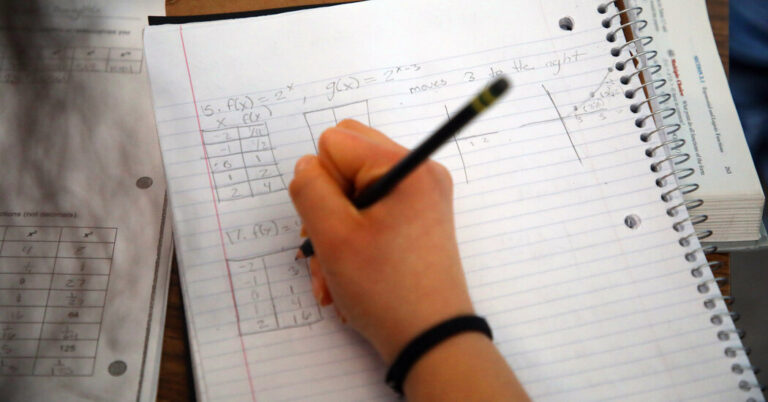
[ad_1]
Despite billions of federal dollars spent to help make up for pandemic-related learning loss, progress in reading and math stalled over the past school year for elementary and middle-school students, according to a new national study released on Tuesday.
The hope was that, by now, students would be learning at an accelerated clip, but that did not happen over the last academic year, according to NWEA, a research organization that analyzed the results of its widely used student assessment tests taken this spring by about 3.5 million public school students in third through eighth grade.
In fact, students in most grades showed slower than average growth in math and reading, when compared with students before the pandemic. That means learning gaps created during the pandemic are not closing — if anything, the gaps may be widening.
“We are actually seeing evidence of backsliding,” said Karyn Lewis, a lead researcher on the study.
On average, students need the equivalent of an additional 4.5 months of instruction in math, and an extra four months in reading to catch up to the typical prepandemic student. That’s on top of regular classroom time. Older students, who generally learn at a slower rate and face more challenging material, are the furthest behind.
National exams last year showed that students in most states and across almost all demographic groups had experienced troubling setbacks, especially in math, because of the pandemic, according to the National Assessment of Educational Progress, a gold-standard federal exam. And last month, national math and reading test results for 13-year-olds hit the lowest level in decades.
Students who do not catch up may be less likely to go to college and, research has shown, could earn $70,000 less over their lifetimes.
The question for educators and federal officials is how to address the four-month gap. Few academic interventions — standard tutoring, summer school, smaller class sizes — are powerful enough by themselves. And the last round of federal Covid relief funding — a record $122 billion to help schools recover from the pandemic — must be spent or committed by September 2024.
Recovery plans have varied widely across thousands of school districts in the United States, with little national accounting of how the money has been spent. Many districts juggled competing priorities — including raising teacher pay, addressing students’ mental health and repairing long-neglected buildings.
The Biden administration required districts to spend at least 20 percent of their aid on academic recovery, an amount some experts have criticized as too low.
“The recovery effort has been undersized from the very beginning,” said Tom Kane, a Harvard economist. “We have seen examples of programs that were making a difference for students, but none have been at the scale or intensity required.”
Research suggests that high-dosage tutoring — which pairs a trained tutor with one to four students, at least three times a week, for a full year — can produce gains equivalent to about four months of learning.
But it is expensive and difficult to scale. A federal survey in December found that just 37 percent of public schools reported offering such tutoring.
Summer school, a popular option offered by many districts, may yield a little over a month’s worth of progress, according to research. That means that the average student would need to attend multiple sessions of summer school, or layer it with other interventions, to catch up.
Nationally, Black and Hispanic students were more likely to have attended schools that stayed remote for longer and often recorded greater losses compared with white and Asian students.
They now have more ground to make up, and, like white and Asian students, their rate of learning has not accelerated.
“What we’re seeing here is a lack of intentionality,” said Denise Forte, chief executive at the Education Trust, an advocacy group focused on students of color and students from low-income backgrounds.
Though federal aid money was supposed to focus on the students hit hardest by the pandemic, she said, “we are clearly not seeing that. There was a real lack of accountability by states to know whether those dollars were being spent in that way.”
Even with a year left of federal aid, it may be difficult for some districts to pivot, said Phyllis W. Jordan, the associate director at FutureEd, a nonpartisan research group at Georgetown University that recently analyzed federal aid dollars in California and found that hundreds of school districts had already spent all or most of their money.
Dr. Kane, the Harvard economist, suggested some states and school districts may need to turn to less popular options — like extending the school calendar. Another possible stopgap: An optional fifth year of high school.
“If we don’t make the changes necessary,” Dr. Kane said, “we will be sticking students with the bill.”
[ad_2]